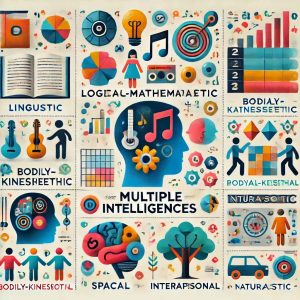Understanding Multiple Intelligences: Unlocking Diverse Potential

In today’s world, the traditional approach to intelligence—measured primarily by IQ tests—no longer paints a complete picture of a person’s abilities or potential. Howard Gardner’s theory of Multiple Intelligences revolutionized the way we view human intelligence, emphasizing that intelligence is not a single entity but a spectrum of diverse abilities. This concept has profound implications for education, personal growth, and career development.
What is the Theory of Multiple Intelligences?
Introduced by psychologist Howard Gardner in 1983, the theory of Multiple Intelligences suggests that there are at least eight distinct types of intelligence. Each individual possesses a unique combination of these intelligences, which shape how they learn, interact with the world, and solve problems.
The Eight Types of Intelligences
- Linguistic Intelligence
- The ability to use language effectively, whether through writing, speaking, or storytelling.
- Common in poets, writers, lawyers, and public speakers.
- Logical-Mathematical Intelligence
- Strength in problem-solving, logical reasoning, and working with numbers.
- Seen in scientists, mathematicians, engineers, and programmers.
- Musical Intelligence
- Sensitivity to sound, rhythm, tone, and music.
- Found in musicians, composers, and sound engineers.
- Bodily-Kinesthetic Intelligence
- Skill in physical movement, coordination, and using the body to express ideas.
- Evident in athletes, dancers, surgeons, and craftsmen.
- Spatial Intelligence
- The ability to visualize and manipulate objects in space.
- Common in architects, artists, designers, and pilots.
- Interpersonal Intelligence
- Strong understanding of others’ emotions, motivations, and intentions.
- Key for teachers, counselors, salespeople, and leaders.
- Intrapersonal Intelligence
- A deep awareness of one’s own feelings, motivations, and goals.
- Often seen in philosophers, psychologists, and self-aware individuals.
- Naturalistic Intelligence
- The ability to recognize and classify natural patterns, such as flora and fauna.
- Found in botanists, ecologists, farmers, and environmentalists.
Why Multiple Intelligences Matter
Understanding the theory of Multiple Intelligences transforms how we approach learning and development. Here’s why it matters:
- Personalized Education:
- Teachers can tailor lessons to match students’ dominant intelligences, making learning more effective and engaging.
- Recognizing Diverse Talents:
- Moves beyond traditional academic strengths to appreciate talents in music, art, sports, and social interaction.
- Career Alignment:
- Helps individuals identify careers that align with their natural strengths, leading to greater satisfaction and success.
- Self-Awareness and Growth:
- Encourages individuals to explore and develop intelligences they might not have realized they possess.
How to Identify Your Multiple Intelligences
There are several ways to discover your unique blend of intelligences:
- Self-Reflection: Analyze activities you enjoy and excel in.
- Assessments: Take a Multiple Intelligences test or participate in programs like DMIT (Dermatoglyphics Multiple Intelligence Test) to gain scientific insights.
- Feedback: Seek input from peers, mentors, and family about your strengths.
Applications of Multiple Intelligences
- Education:
- Schools are increasingly integrating this theory into their curriculum to address diverse learning needs.
- Workplace:
- Employers can leverage employees’ strengths to improve productivity and team dynamics.
- Parenting:
- Parents can nurture their children’s intelligences by exposing them to a variety of activities and observing their interests.
- Personal Development:
- Encourages individuals to explore hobbies, skills, and professions that align with their intelligences.
Conclusion
The theory of Multiple Intelligences celebrates the diversity of human potential, proving that everyone has unique strengths worth nurturing. By embracing this concept, we can foster more inclusive education systems, workplaces, and societies where every individual’s abilities are valued and developed. Whether you’re a student, parent, educator, or professional, understanding and leveraging Multiple Intelligences can unlock pathways to success and fulfillment.